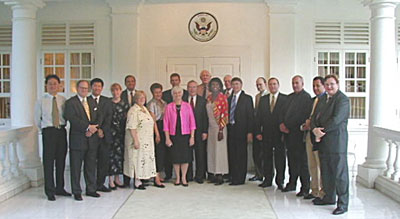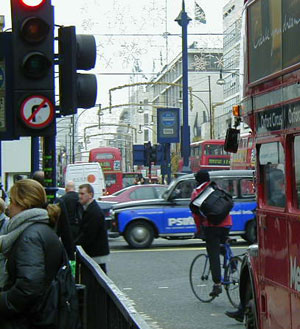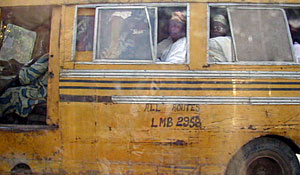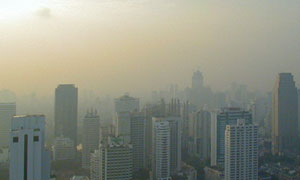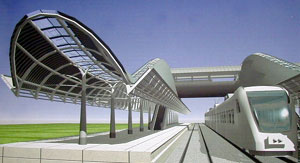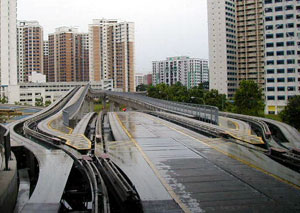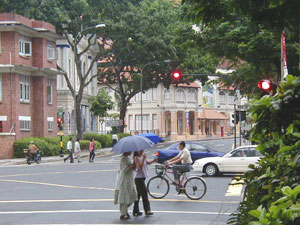Home
| Positions | How to Help
| Fundraising | Signage

|
International Diplomatic Business Missions
|
||||||||||||||
Mobility is a prerequisite for poverty reduction. People in many other countries rely on transit for their economic behavior. In lots of places, it's all they've got, whether it works or not. Usually it does work, at least a lot better than it works here. Obviously, large riderships create economies of scale, making service delivery more efficient. Here, transit service is not competitive with private transportation. Too many people drive. It is difficult to provide a level of service that attracts more customers, and ridership trends don't encourage large investments in public transportation. Cars are lions and buses are lambs. The large investment in private transportation devours the potential for transit. Try this simple test. Go to Londion and shoot a roll of film. Then go to Seattle and shoot a roll. To keep it interesting, shoot a roll in Puerto Vallarta, too. London is famous for transit, for their meticulous maintenance and refurbishment, their level of service and fares. Seattle is a well respected North American transit property. Puerto Vallarta is just a tourist town. When you develop the pictures, you will find that the Seattle pictures rarely feature a bus, while the others rarely feature less than two. If you look closely, you'll see that each bus elsewhere is usually twice as packed as any in Seattle. The mistaken conclusion is often that bus systems with low ridership exist because no one wants to ride the bus. But the evidence suggests otherwise, that ridership increases alongside level of service. At one stop in Puerto Vallarta I recorded an average of three buses per minute. WHen thereis no waiting, people will ride the bus.
The world presents many different ways to provide and pay for transit service. In Lagos, Nigeria, it is all by private franchise. The vehicles are numerous, painted ubiquitously orange and are often missing door or windows. They are typically small vans, often festooned with several people hanging out into the "air conditioning" or holding some furniture on top of the moving vehicle. Their exteriors are literally "hammered". Many look as if thousands of children with ballpean hammers had been at work on them for weeks. Yet this is how everyone that cannot afford a Mercedes gets around. Sadly, it doesn't work very well but, interestingly, it works as well as the cars because everyone is stuck in the same traffic. The week I was in Lagos, over 40 people died in transit related accidents, one of them careening into a swamp while racing the wrong way across a bridge, to avoid traffic.
In Bangkok, traffic is chaotic and oddly bhuddist. For instance, speed limits are the exception. You can drive as fast as you like. But most people don't. Most of the time, you can't. Heaven help you if you cause an accident. It could take several reincarnations just to attend to the bureaucracy, not to mention the karma. Despite huge public investments in "state of the art" mass transit, Bangkok's prized project loses money because fleets of franchised bus concessions move people so frequently and cheaply that they will not bother to climb the stairs to wait for the more expensive, plusher, train. It was a public/private partnersip that just didn't pan out. When I was there, it was getting an annual subsidy of about $600mm USD.
Folks in cars can't help wishing they owned a scooter, because every
minute scores of them drive the "striped line lane" between
queues of perpetually stalled automobiles. Adventurous souls might try
the private Tuk Tuk fleet - three wheel motorcycle rickshaws with crazed
drivers who imagine they are scooters by accellerating rapidly between
cars and navigating sharp corners on two wheels, driving on sidewalks,
etc. In another example of partnership, a system of toll "skyways"
magically transports you into free flowing traffic between strategic
gridlocked centers of the immensely sprawling city. It is the only way
essential goods and services get delivered. But the overwhelming majority
of the populaiton chooses mass transit as a more affordable and expedient
alternative.
Downtown Kuala Lumpur is reminiscent of a post-modern Stonehenge, with the pylons of an overhead rail system abandoned after a public/private partnership went bust. But their Sentra project is a massive undertaking, "infilling" the city center with 200,000 new residents in a mixed use development designed to house corporate headquarters and up-scale entertainment venues while occupying the hub of all city and regional transportation. It is the terminus of the Express Rail Link from their international airport, about thirty miles out of town, and connects with the main line between Singapore and China. Singapore has been capable of much greater advances in public transportation. It is a unique parlimentary republic because their city government is also the national government. It is very efficient at protecting the watershed and providing public services. This tiny island state displays extraordinary planning for the public good and has made tremendous investments in transportation and housing in order to avoid the chaos typical of their neighbor's cities. On the other hand, they are very strict about some things. You don't see much graffiti in Singapore, or gum.
Singapore shows that there are alternatives to an automobile dominated
urban transport scheme, and that they offer some distinct advantages.
The most noticable advantages are cleaner air, more pleasant streetscapes,
the parklike atmosphere of residential areas and a relaxed attitude.
In the downtown core, certain transit stops feature interactive displays
on which you touch your destination and are given alternate routes,
estimated times and costs. Thirty thousand taxis with GPS units keep
the Land Transport Authority apprised of traffic movement throughout
the city. We have much to explore. See more: |
||||||||||||||
